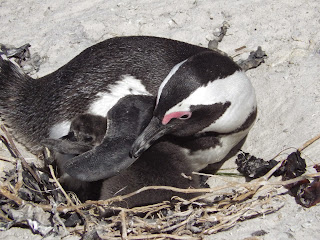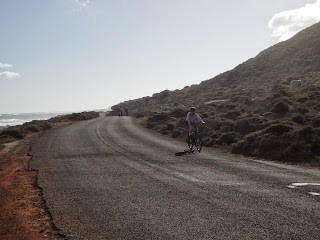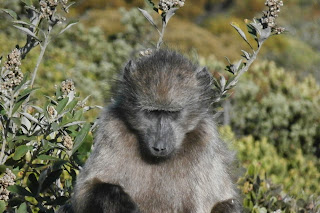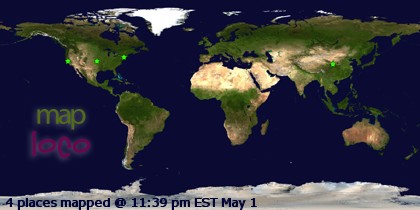 |
| The Calypso, one of several boats taking tourists to visit the seals |
 |
| Every lump is a seal |
 |
| Wet ones |
 |
| Napping dry ones |
 |
| Anywhere you can fit |
 |
| Half wet, half dry |
 |
| That's the road scratched into the hillside |
 |
| Island with seals just off the point on the left |
 |
| There are shark spotters standing here, too |
 |
| Napping |
 |
| Reminds me of my cat |
 |
| Hangin' on the beach |
 |
| In their nests |
 |
| Youngsters left on their own while parents are out feeding |
 |
| Out for a walk |
 |
| Landing!! |
 |
| Made it |
 |
| Taking care of the kid |
 |
| This baby was sadly dead. Mom was trying to revive it |
 |
| Bad hair day |
 |
| Penguin love |
 |
| Not in a hurry, but determined |
 |
| Yet another ostrich |
 |
| Karen coming 'round the bend |
 |
| You are here |
 |
| We were there |
 |
| And gannets |
 |
| You're here now |
 |
| Cape Point in the distance |
 |
| Looking east down the coast |
 |
| Looking north. Atlantic on the left, False Bay on the right |
 |
| I suspect we'll see lots more of these guys |
 |
| Lunching |
 |
| They're cute when they're not being a pain |
 |
| Getting a ride on mom |
 |
| Determined |
 |
| Satisfied with himself |
It was cool to get to the Cape, but in hindsight, it would have been a better tour to do by yourself in a car because it’s well signposted and easy to get to. And doing it yoursel would have been far cheaper, too (R400 to rent a car vs the R750 per person we paid). On top of that, doing it yourself gives you the ability to take your time at the places you want to take your time. Boulder Beach and the penguins come to mind. In addition to penguins themselves, the parking area featured an AWESOME acapella street performing group called the Abonwabisi Brothers. We got to hear about 15 seconds of them, and they were great. I didn't have time to buy their CD, but it turns out they have 2 for sale on iTunes, and I bought them both the moment I got home.
For the record, the Cape isn't the dividing line between the Indian and South Atlantic Oceans. It IS the meeting point of two main currents that makes False Bay a darned sight warmer than the Atlantic. And the current on the False Bay side does come from the Indian Ocean. But the actual dividing line between the Atlantic and Indian Oceans is at Cape Arghulas, which is about halfway back to Mossel Bay, and almost 200 km south of the N2, in the middle of nowhere. I thought about going there, but... no.
I also learned that Cape Town is on the same latitude as Sydney and Perth in Australia, Santiago and Buenos Aires in South America. So technically, the farthest south I have ever been in my life remains Phillip Island, Australia, beating out Ancud, Chile and Cape Point.
We got back to town at 5:45, and rushed over to the local grocery store to pick up some wine. Wine sales close at 6 PM. I was standing in the checkout line at 5:50 PM. But because I didn’t make the till by 6 PM (the store was busy), I couldn’t buy the wine. Sigh. We came home despondent, only to find a power outage affecting our building. We couldn’t get in the building’s front door for a while, then when we could, we had no lights so worked from flashlights. Sigh. We left for dinner early, making the wine unnecessary anyway. This is the 3rd power outage we have been though thus far.
Coming to Africa? Bring a flashlight. And a headlamp.
====================
Today’s Africa Travel Tip: Who will you meet?
Tonight, we met a South African. That’s not really that common. In Wilderness, while our hotelier was South African, his staff was from Malawi. Our waiter two nights ago was from Zimbabwe. We keep being served by folks from every country EXCEPT South Africa. There are folks from Zambia, the Congo, Cameroon, Somalia, Zaire, Mozambeque, Burundi, Kenya – you name an African country, you’ll meet them here. Shopkeepers tend not to be South African. Market people (especially street market people) are never South African. It makes for interesting conversations. One Cameroon person was trying to convince us to visit his country because the need the tourism money. One from Zimbabwe said they would go home in a minute if the political situation changed and the economy was back to the way it was. All are in South Africa because there are jobs to be had.
Sadly, this last few weeks, this is erupting in violence against some cultures in the country. There have been stoning of Somali citizens. Violence has been committed against Malawians and Mozambicans, and this is spreading to Ethiopians, Bangladeshis and Zimbabweans. All of this violence has taken place in the Townships, which are the slums where the poorest live, mostly in Durban and Johannesberg. Poor South Africans are unhappy that poor Malawians are taking their jobs.


No comments:
Post a Comment